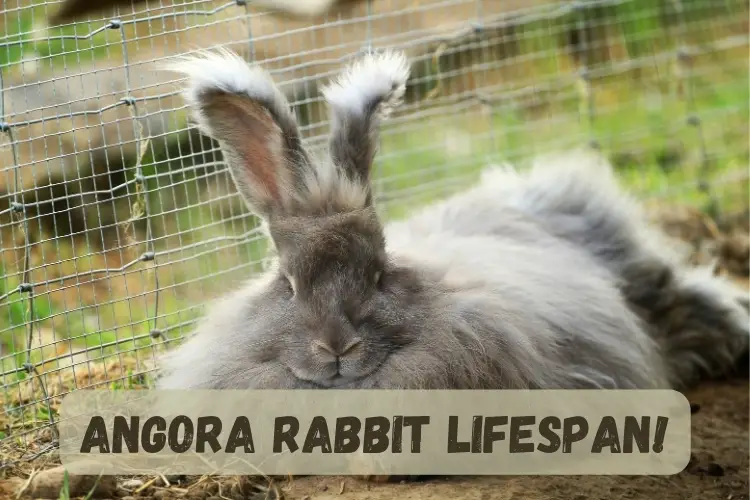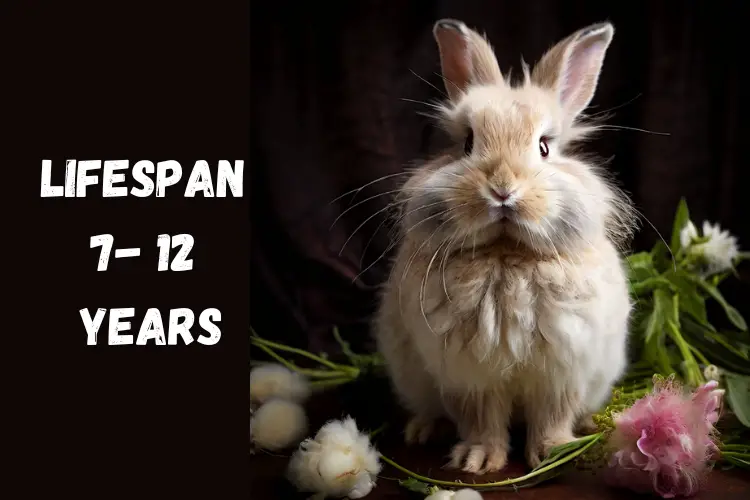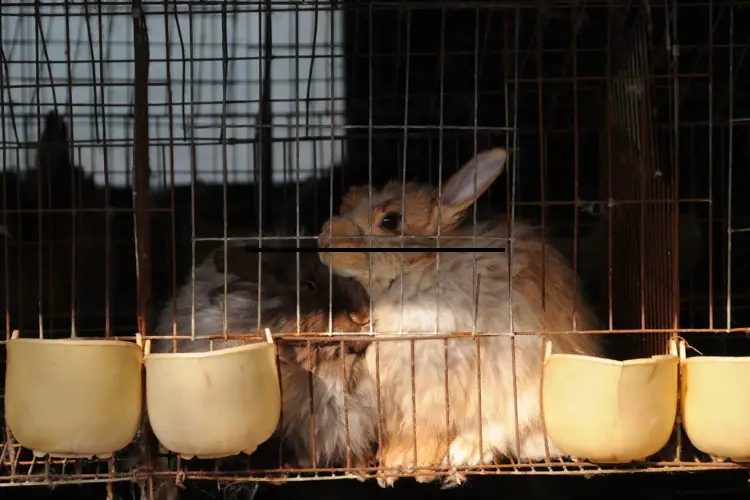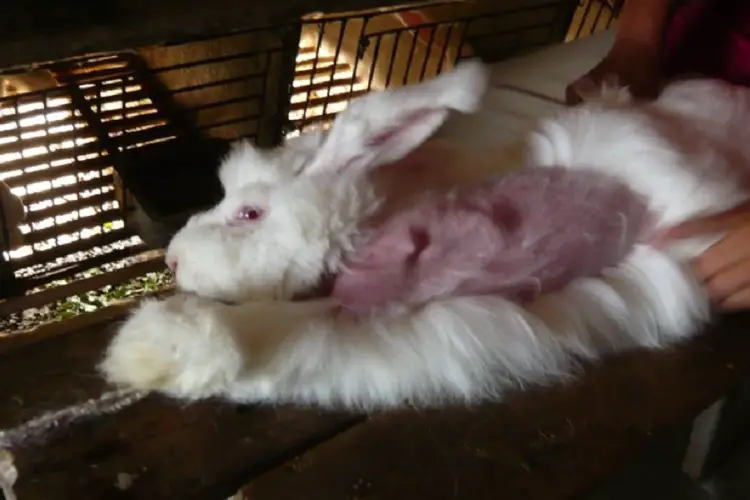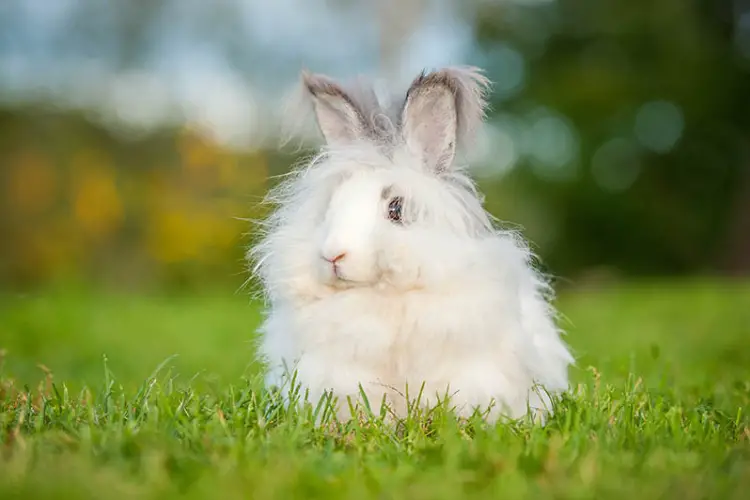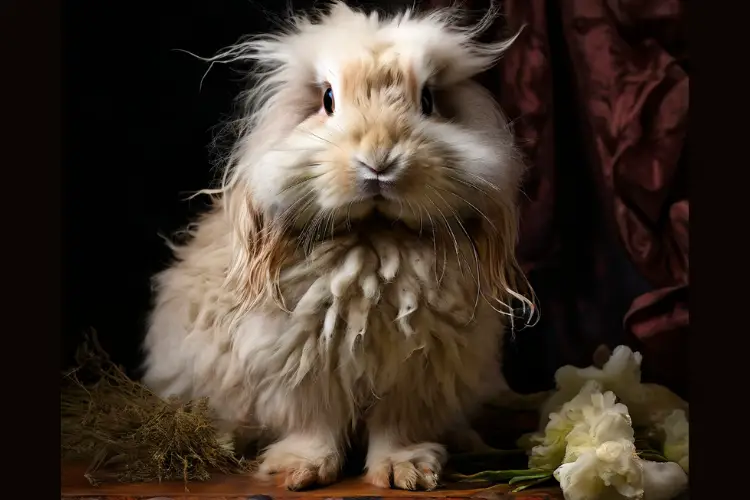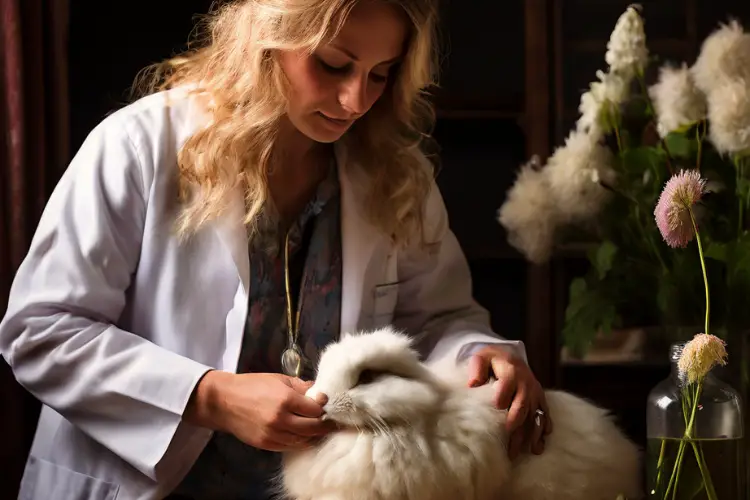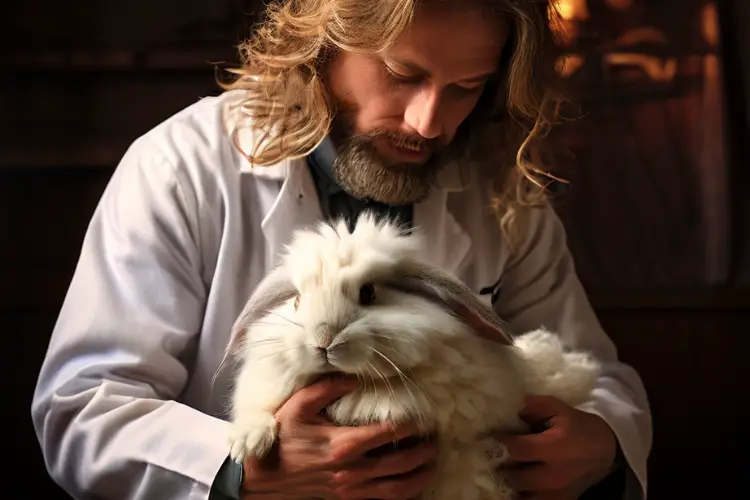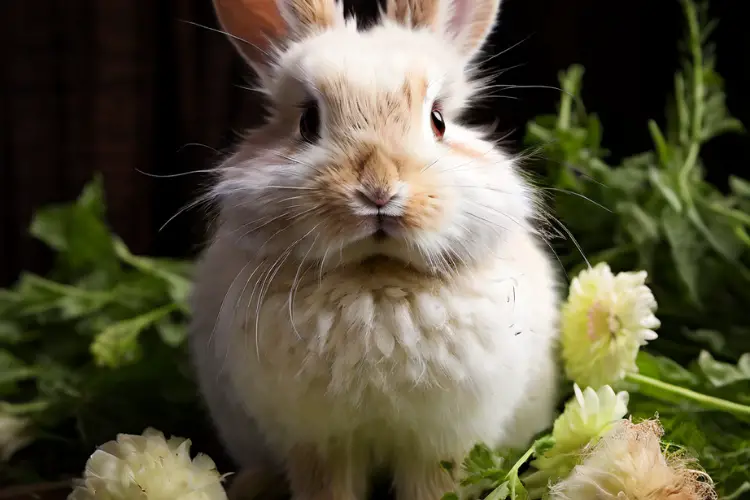Angora rabbits are renowned for their soft, luxurious wool and friendly disposition, making them a popular choice among pet enthusiasts. Understanding the lifespan and health of these rabbits is crucial for any prospective or current owner.
In this article, we will dive into the average lifespan of Angora rabbits, the factors that influence their longevity, common health issues they may face, and the care needed to ensure they lead a happy and healthy life.
Key Takeaways
- Angora rabbits typically have a lifespan of 7 to 12 years, influenced by genetics, diet, and living conditions.
- Spaying and neutering can positively impact the longevity of Angora rabbits by preventing reproductive cancers.
- Common health issues include dental problems, wool block, digestive issues, and respiratory illnesses, with lop-eared rabbits more prone to dental and aural issues.
- Special care for senior Angora rabbits involves dietary adjustments, managing arthritis, and monitoring for age-related diseases.
- Preventive measures such as regular veterinary visits, vaccinations, and proper grooming are essential for maintaining the health of Angora rabbits.
Understanding Angora Rabbit Lifespan
Average Lifespan and Factors Affecting It
The lifespan of an Angora rabbit can vary, but with proper care, they can live up to 12 years. Genetics play a crucial role in determining the longevity of these rabbits, alongside environmental factors and diet. A diet that avoids selective feeding is essential for preventing life-threatening dental and digestive disorders that can shorten an Angora’s life.
Environmental factors such as housing conditions, stress levels, and exercise opportunities also significantly impact their lifespan. It’s important for owners to provide a safe, clean, and stimulating environment to ensure their rabbits live a full and healthy life.
Here are some key factors that affect the lifespan of an Angora rabbit:
- Genetics and hereditary health issues
- Quality and type of diet
- Spaying or neutering
- Regular health checks and preventive care
- Living conditions and enrichment activities
Genetics and Lifespan
The genetics of Angora rabbits play a crucial role in determining their lifespan. Like other breeds, Angora rabbits inherit traits from their parents that can influence their health and longevity. Selective breeding can help to enhance desirable traits such as robust health and a longer lifespan, while also reducing the prevalence of genetic disorders.
Certain genetic lines within the Angora breed may be predisposed to longer lives, provided they are given proper care. It’s important to understand that while genetics can set the potential for a rabbit’s lifespan, environmental factors and care are equally influential.
For instance, a well-balanced diet, safe housing, and regular veterinary care can significantly extend the life of an Angora rabbit beyond its genetic predispositions.
When considering the purchase or adoption of an Angora rabbit, potential owners should inquire about the rabbit’s lineage. Knowledge of any hereditary health issues within the rabbit’s family can be invaluable for preventive care. Below is a list of factors to consider when evaluating the genetics and potential lifespan of an Angora rabbit:
- Parental health history
- Known hereditary conditions
- Breeder’s selection criteria
- Past longevity of the lineage
Impact of Spaying and Neutering on Longevity
Spaying or neutering your Angora rabbit can have a significant impact on its lifespan and overall health. These procedures not only prevent unwanted litters but also reduce the risk of certain cancers and other health issues.
For instance, spaying a female rabbit can greatly decrease the chances of uterine cancer, which is common in older, unspayed rabbits.
The benefits of these surgeries extend beyond reproductive health. Neutered males are less likely to display aggression and territorial marking behaviors, which can lead to a more harmonious living environment.
Additionally, spayed and neutered rabbits are often easier to bond with other rabbits, promoting social interaction and reducing stress-related health problems.
While the decision to spay or neuter should be made in consultation with a veterinarian, the long-term health advantages are clear. A Complete Guide to Spaying or Neutering Your Rabbit highlights that these procedures can “extend rabbits’ lifespans, improve their health, and reduce unwanted behaviors.”
Common Health Issues in Angora Rabbits
Dental Health Concerns
Angora rabbits, with their distinctive long fur, are not immune to dental issues common to domestic rabbits.
A UK study highlighted that lop-eared breeds, which include some Angora varieties, are significantly more prone to dental problems than their erect-eared counterparts. Dental health is critical, as issues can lead to severe complications if left untreated.
Dental problems in Angora rabbits can range from overgrown incisors to molar spurs. These conditions can cause pain and difficulty eating, which may result in weight loss and a decline in overall health. It’s essential to monitor your rabbit’s dental health and provide a diet that promotes dental wear.
Avoid selective feeding by offering a balanced diet that discourages picking out only the preferred bits of food.
Here are some common dental issues and their relative risk compared to erect-eared rabbits:
| Dental Issue | Relative Risk |
|---|---|
| Incisor Pathology | 23x |
| Molar Overgrowth | 12x |
| Molar Sharpness | 13x |
| Molar Spurs | Significant |
Regular check-ups with a veterinarian experienced in rabbit care are crucial for early detection and management of dental health concerns. Preventive measures, such as providing ample hay for chewing, can help maintain dental health and prevent the onset of these issues.
Wool Block and Digestive Problems
Angora rabbits are renowned for their luxurious wool, which requires diligent grooming to prevent wool block, a serious condition where ingested fur accumulates in the digestive tract. Regular grooming, at least twice a month but ideally weekly, is crucial to avoid this potentially fatal issue.
When it comes to feeding, it’s important to steer clear of animal proteins and treats with high sugar content, as these can cause digestive problems and obesity.
A diet high in fiber, primarily consisting of hay, is essential for maintaining a healthy digestive system. Avoid muesli mixes, as rabbits may selectively feed and neglect necessary nutrients, leading to health complications.
Here are some tips to prevent wool block and support your Angora’s digestive health:
- Ensure a high-fiber diet with plenty of hay.
- Avoid treats and foods that rabbits cannot digest properly.
- Groom your rabbit regularly to remove loose fur.
- Monitor your rabbit’s fecal output to check for any changes.
Ear and Eye Infections
Angora rabbits, with their distinctive fluffy wool, are susceptible to various ear and eye infections. Ear mites, particularly Psoroptes cuniculi, can cause significant discomfort and lead to secondary infections.
Treatment typically involves rabbit-safe antibiotics and, in severe cases, sedation may be necessary for proper care.
Eye infections in Angora rabbits can stem from irritants like dust or poor ventilation. Symptoms such as redness, discharge, or swelling require prompt veterinary attention to prevent complications.
Maintaining a clean habitat and regular grooming can help minimize the risk of these infections.
Here are some steps to prevent and manage ear and eye infections in Angora rabbits:
- Regularly check your rabbit’s ears and eyes for any signs of infection.
- Keep the living area well-ventilated and free of dust.
- Seek veterinary care at the first sign of infection.
- Follow your vet’s instructions for administering medication.
Respiratory Illnesses
Respiratory illnesses in Angora rabbits can be a serious concern for any rabbit owner. Upper respiratory infections, commonly referred to as ‘snuffles’, are overwhelmingly common in these fluffy companions.
According to PetMD, almost all rabbits will experience a case of the sniffles at some point in their lifetime. Symptoms to watch for include nasal discharge, sneezing, and labored breathing.
Effective management of respiratory issues is crucial. A veterinarian may prescribe antibiotics to combat bacterial infections. However, prevention is always better than cure. Ensuring a clean, well-ventilated living space and reducing stress factors can help minimize the risk of respiratory problems.
It’s also important to isolate sick animals to prevent the spread of infection to other rabbits. Here is a simple checklist for rabbit owners to follow in order to maintain respiratory health:
- Regular cleaning of the living area
- Avoiding dusty bedding materials
- Providing a stress-free environment
- Monitoring for early signs of illness
- Seeking prompt veterinary care when needed
Senior Angora Rabbit Care
Adjusting Diet for Older Rabbits
As Angora rabbits age, their dietary needs evolve, necessitating adjustments to ensure they maintain optimal health. Senior rabbits may require more pellets to support the growth of fur and to manage weight, particularly if they are underweight or ill. It’s crucial to choose pellets that are high in fiber and low in calories to prevent obesity, a common issue in less active, older rabbits.
When selecting pellets, freshness and quality are paramount. Avoid pellets with animal protein and ensure the packaging is intact to prevent mold and bug infestations.
For older rabbits, alfalfa pellets can be beneficial for weight gain, but should be given in moderation due to their higher calcium content. It’s also important to note that pellets should only make up about 5% of a rabbit’s diet, with the remainder consisting of hay, fresh vegetables, and water.
In some cases, a rabbit’s tolerance for pellets may decrease with age. If this occurs, or if the rabbit is extremely overweight, it may be necessary to reduce or eliminate pellets altogether. Instead, focus on providing a balanced diet that includes a variety of foods to meet their nutritional needs without excessive weight gain.
Managing Mobility and Arthritis
As Angora rabbits age, they may face challenges with mobility and develop arthritis, a common condition that causes joint inflammation and discomfort.
Providing a comfortable living environment is crucial for these senior rabbits. Soft bedding can help alleviate pressure on sore joints, and ensuring that everything they need is easily accessible can greatly improve their quality of life.
Modifications to their habitat, such as lower entry points to litter boxes and reduced cage heights, can aid in their movement. Additionally, incorporating gentle exercise into their routine promotes muscle strength and agility, which is beneficial for their overall well-being.
It’s important to consult with a veterinarian for appropriate pain management strategies, as they can recommend safe and effective treatments tailored to your rabbit’s needs.
Supplements such as Old Timer from NHV Natural Pet Products may also be recommended to soothe joint inflammation and support endurance. Always discuss any new supplements with your vet to ensure they are suitable for your rabbit’s specific health profile.
Monitoring for Age-Related Diseases
As Angora rabbits enter their senior years, typically classified as over 8 months of age, it becomes crucial to monitor them for signs of age-related diseases. Regular health checks are essential to detect issues early and manage them effectively. Conditions such as arthritis, dental disease, and vision or hearing loss can impact their quality of life.
Owners should be vigilant for any changes in behavior or routine, which could indicate an underlying health problem. A list of common symptoms to watch for includes:
- Decreased activity levels
- Changes in eating or drinking habits
- Unusual weight loss or gain
- Signs of pain or discomfort
It’s important to maintain a relationship with a rabbit-savvy vet who can provide specialized care and advice tailored to the needs of aging Angora rabbits. They can also guide you on any necessary adjustments to diet, habitat, or routine to support your rabbit’s well-being in their later years.
Special Needs and Emergency Care
Caring for Rabbits with Head Tilt
Caring for an Angora rabbit with head tilt, also known as torticollis, requires patience and a dedicated approach. Early intervention is crucial in managing this condition, which can stem from various causes, including infections, trauma, or neurological disorders.
One such infection linked to head tilt is Encephalitozoonosis, caused by the parasite E. cuniculi, which dwarfs have increased susceptibility to.
A supportive care regimen is essential for rabbits with head tilt. This includes maintaining a safe environment to prevent injuries, administering prescribed medications, and ensuring proper nutrition. It’s also important to monitor the rabbit’s condition closely and adjust care as needed. Below is a list of supportive care tips:
- Ensure a non-slip surface to aid in mobility
- Provide easy access to food and water
- Keep the living area clean to prevent secondary infections
- Consult with a rabbit-savvy vet for ongoing assessment and treatment
Remember, while some rabbits may recover fully, others may live with residual effects. The goal is to offer the best quality of life possible.
Dealing with Rear End Paralysis
Rear end paralysis in Angora rabbits is a serious condition that requires immediate attention and specialized care. The paralysis may be due to various causes, including trauma, infections, or degenerative diseases. Early detection and intervention are crucial for the rabbit’s quality of life.
When dealing with rear end paralysis, maintaining the rabbit’s cleanliness is essential to prevent urine scald and infections.
A diet rich in fiber is also important to support digestive health, as mobility issues can lead to gastrointestinal stasis. Veterinary guidance is imperative, as they may recommend treatments such as physical therapy or medication based on the underlying cause.
- Ensure a comfortable living space with soft bedding
- Regularly clean and dry the affected area
- Monitor for any signs of sores or infections
- Consult with a rabbit-savvy vet for a tailored care plan
If these are suspected, your vet may wish to get a positive diagnosis via radiography. The exact treatment will depend on the cause of the problem.
First Aid for Common Injuries
When it comes to providing first aid for common injuries in Angora rabbits, being prepared is key. Always have a first aid kit ready that includes essentials such as gauze, scissors, antiseptic wipes, and styptic powder to stop bleeding. It’s crucial to handle your rabbit gently to avoid additional stress.
For minor cuts or abrasions, clean the area with saline solution and apply an antibiotic ointment. If the rabbit is bleeding, apply pressure with a clean cloth and use styptic powder if necessary. In the case of more serious injuries or if you’re unsure about the severity, seek veterinary care immediately.
Here’s a simple list of items to include in your rabbit’s first aid kit:
- Gauze and cotton balls
- Scissors and tweezers
- Antiseptic wipes and saline solution
- Antibiotic ointment
- Styptic powder
- Ice pack for reducing swelling
- Emergency contact information for your vet
Remember, while first aid can provide immediate relief, it is not a substitute for professional veterinary care. Regular health checks can help prevent some emergencies, and knowing how to react can make a significant difference in your rabbit’s recovery.
Preventive Measures and Regular Health Checks
Importance of Regular Veterinary Visits
Regular veterinary visits are crucial for maintaining the health and well-being of Angora rabbits. Early detection of potential health issues can lead to more effective treatment and a better prognosis for your pet.
During these check-ups, veterinarians can monitor your rabbit’s weight, dental health, and overall condition, ensuring that any subtle changes are noted and addressed promptly.
Vaccinations, parasite control, and grooming are essential components of preventive care. A consistent schedule for veterinary visits allows for timely vaccinations and the management of parasites, which can be detrimental to your rabbit’s health if left unchecked.
Grooming is not only important for your rabbit’s appearance but also for preventing health issues such as wool block, which can arise from ingesting excess fur during molting.
Here is a simple checklist for your Angora rabbit’s regular health checks:
- Biannual health examinations
- Annual vaccinations
- Monthly parasite prevention
- Regular grooming sessions
By adhering to this routine, you can help ensure a long and healthy life for your Angora rabbit.
Vaccinations and Parasite Control
Vaccinations and parasite control are essential components of preventive healthcare for Angora rabbits. Regular vaccinations help protect against common viral diseases, such as Myxomatosis and Rabbit Hemorrhagic Disease (RHD), which can be fatal.
It’s crucial to follow a vaccination schedule as recommended by your veterinarian.
Parasite control is equally important to maintain your rabbit’s health. Angora rabbits can be susceptible to various parasites, including Psoroptes cuniculi, the rabbit ear mite, which causes otitis externa.
A comprehensive parasite control plan should include regular check-ups and treatments for both external and internal parasites. Here’s a simple list to keep track of the essentials:
- Annual vaccinations against common diseases
- Regular treatments for external parasites like mites and fleas
- Deworming for internal parasites as per veterinary guidance
- Monitoring for signs of infestation or illness
By adhering to these preventive measures, you can help ensure a longer, healthier life for your Angora rabbit.
Grooming and Hygiene for Health Maintenance
Maintaining proper grooming and hygiene is essential for the health of Angora rabbits. Regular grooming helps to prevent the formation of mats and tangles, which can cause skin irritation and discomfort. It is also crucial for the prevention of wool block, a common digestive issue in long-haired breeds.
For Angora rabbits, grooming is not just about aesthetics; it’s a vital health practice. Short-coated breeds should be groomed at least once a week, while Angora rabbits require daily attention due to their long fur. Nail trimming is another important aspect of grooming that should not be overlooked, as overgrown nails can lead to pain and mobility issues.
Grooming Schedule for Angora Rabbits:
- Daily brushing to prevent mats and tangles
- Weekly nail checks and trimming as needed
- Regular ear and eye checks to catch any signs of infection early
By adhering to a consistent grooming routine, owners can ensure their Angora rabbits remain healthy and comfortable throughout their lives.
Conclusion
In summary, the lifespan and health of Angora rabbits are influenced by a variety of factors, including breed-specific issues and general care practices. While lop-eared rabbits like the Holland Lop may face more dental health challenges, proper care and attention can mitigate many health risks.
Senior and special needs care, along with appropriate toys and services, play a crucial role in maintaining the well-being of these rabbits.
It’s essential for potential and current owners to be aware of the needs of Angora rabbits, including their susceptibility to certain health conditions, and to provide a loving and attentive environment. With the right care, these fluffy companions can enjoy a full and happy life.
FAQs:
What is the average lifespan of an Angora rabbit?
The average lifespan of an Angora rabbit is typically around 7 to 12 years. Factors such as genetics, diet, and overall care can affect their longevity.
How does spaying or neutering impact the lifespan of an Angora rabbit?
Spaying or neutering can positively impact the lifespan of an Angora rabbit by reducing the risk of reproductive cancers and other health issues.
What are common health issues that Angora rabbits face?
Angora rabbits commonly face health issues including dental problems, wool block, digestive issues, ear and eye infections, and respiratory illnesses.
How should I care for a senior Angora rabbit?
Caring for a senior Angora rabbit involves adjusting their diet to their changing nutritional needs, managing conditions like arthritis, and monitoring for age-related diseases.
What emergency care should I be prepared to provide for my Angora rabbit?
Be prepared to provide emergency care for conditions like head tilt, rear end paralysis, and common injuries. It’s essential to have a first aid kit and know basic first aid procedures.
Why are regular veterinary visits important for my Angora rabbit?
Regular veterinary visits are crucial for early detection of health issues, vaccinations, parasite control, and maintaining overall health through grooming and hygiene.

